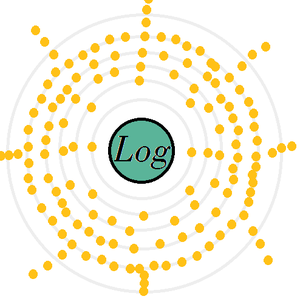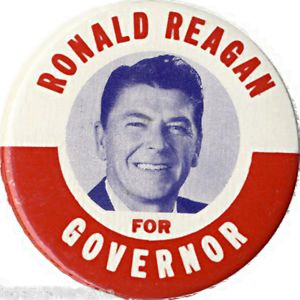Electron
Electrons -- the fundamental electric beads of which all else is made. What can we say about such an important entity?
For starters, we can describe it!
Electrons, as has been known ever since Lord Rutherford discovered that particles may bounce off solid matter in a landmark experiment [1] conducted some time in the 1800's [2], are small, round, infinitely hard balls, and they are blue[3] (see illustration).
Before Lord Rutherford's landmark experiment, electrons were thought to be soft and smooshy, not entirely unlike mashed potatoes.
If electrons were solitary (like hamsters) we wouldn't know anything about them because, of course, the world as we know it wouldn't exist. But they're not.
Electron Gangs[edit | edit source]
In fact electrons mostly tend to repel each other, which may be where the old saying about "likes repelling and differences attracting" (or however it goes) originally came from.
It's an interesting fact, however, that electrons never collide with each other because they are infinitely small. So, no matter how close they may come to running into each other, it's never close enough. And so they are doomed to spending their entire lives in morbid isolation, unless they should happen to encounter a proton (in which case they may be swallowed and become part of a neutron) or a positron (in which case it's all over for them in a burst of radiation -- that's how the Starship Enterprise warp drive worked, by the way).
Eh now... where were we?
Ah yes -- we were talking about atoms. Atoms have protons in them (protons are beyond the scope of this article) as well as a few neutrons (which are irrelevant for our story). The thing with protons is they attract electrons, and so, if you jam enough protons together, you get something that can hold a whole passel of electrons in orbit around it. And that is what we call an atom.
Atoms are very important, since many of life's most important features are made of them (such as beer, cats, sex toys, soap, beer, and all those DVDs with old Star Trek episodes on them).
Electrons in Politics[edit | edit source]
Starting in the 1960's "ElectRons" entered the political arena in a major way. They were a driving force behind a sea change in American politics in the Elect-Ron! movement, which was successful far beyond the expectations of even the most ardent proponents of electrons.
- ↑ It really was a very wonderfully done and highly surprising experiment, and not nearly as idiotic as I made it sound here.
- ↑ As a point of reference on the time, it was in 1850 that the probability of a positive outcome when visiting the doctor finally exceeded 50%. Before that, most visits to a doctor actually made the patient sicker. Thus, we can reasonably date "modern medicine" to the year 1850.
- ↑ That's why electricity is always shown in blue in textbooks (the good ones, anyway). It's also why electric arcs are blue and most sparks are blue. If you have a gas range in your kitchen, you may have noticed the blue flames -- that's electrons, again! They're involved in the reaction of the burning gas.


